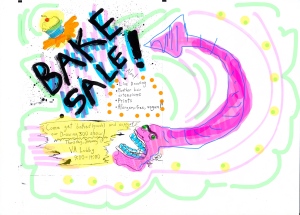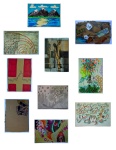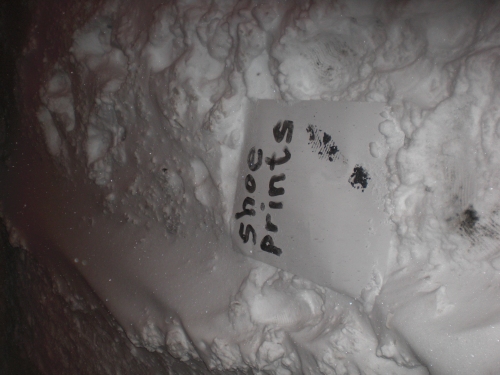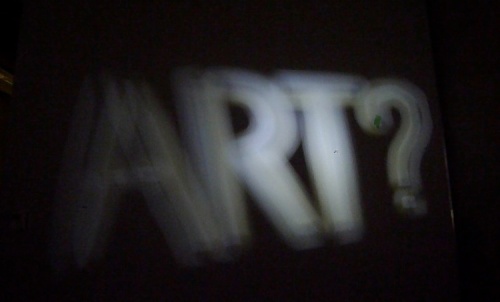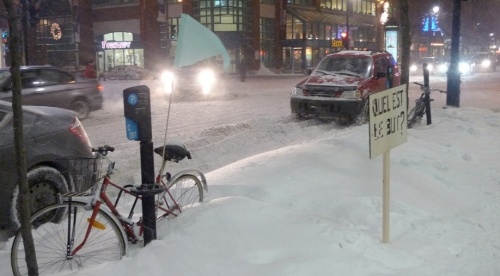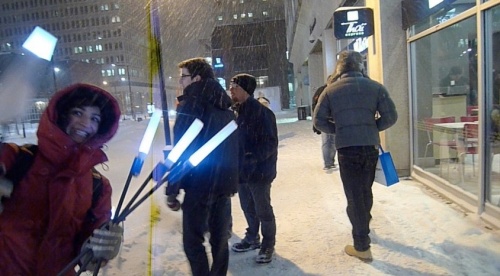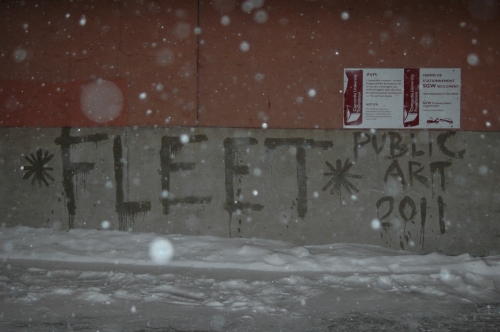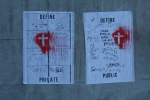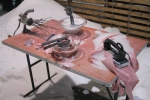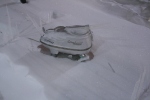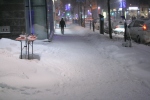Top Posts
- DRAW300 fundraiser #1!
- FLEET
- DRAW
- DRAW300-Submissions to "Drawing Connections" in Italy-http://www.callfor.org/?p=849
- Wow that was cold! My project was about foot print…
- I think the fact that it was one of the strongest…
- For my Fleet project (Inspiring Indifference) I pu…
- Fleet was my friend’s and my first experience at p…
- …
- Fondly reflecting on the fleet project, which was…
Archives
Blogroll
- A Fleeting Glimpse of Colour-Art Students Bring Their Practice Outdoors
- ART MATTERS-CONCORDIA UNIVERSITY BFA EXHIBITION
- ARTANGEL
- ARTICULE SPECIAL PROJECTS
- Artx399\’s Blog
- cart-shelter
- CCA EXHIBITION-ACTIONS-WHAT YOU CAN DO WITH THE CITY
- CITY AS PALIMPSEST BLOG
- Concordia Journal
- CREATIVE TIME
- EBZAV
- EXPERIMENTAL TELEVISION CENTER
- FASA Lecture Series 2011
- FLO’S BLOG
- Food For Gay Horses
- HETEROTOPIAS
- homeless vehicle-Krzysztof Wodiczko
- How to Make Your Own Cart
- Jazz Band playing on a Bike Cart!
- KOLLECTIF.NET
- Lysanne’s Blog
- mobiusstripmall
- MZTV Museum of Television
- NOMADESK WRITER’S RESIDENCY
- OPEN SESSIONS CCA
- Patrick White – journalist
- PIQUE-NIQUE
- PUBLIC ART-EYESORE TO EYE CANDY
- SHELTER IN A CART
- Soyfish Media
- SPACING MONTREAL
- underground montreal 1
- underground montreal 2
- underground montreal 3
- WordPress.com
- WordPress.org
- Work Cycles: Workbike
My project was about foot prints, about how we leave a physical trace. If I walk around in my neighborhood, in the snow, for an hour, my footprints will be a physical representation of the time I spent walking and the places I went. If I walked in to a shop my prints would be brown water from melted snow. Similar to any other kind of sound or visual recording or printing the prints will tell about time and various conditions.
On the day of our class event I had hoped that the sidewalks would be covered in brown, muddy slush as they are most days. Then I only had to provide a white surface for people to step on and the physical trace of their presence would be framed immediately. But because of the vast amounts of clean, white snow I chose to use shoe polish underneath the shoes to get a clear graphic print.
It was a great experience to be out on the campus area and work when everybody else was hurrying indoors to escape the weather. It felt a bit like being in a happy, ignorant pocket in public space. And I think the weather made our hole event stand out more than if it had taken place in warmer weather during summer.
Christian Hansen
I think the fact that it was one of the strongest snow storms all winter played a huge part in influencing the evening’s events. It was incredibly snowy and windy and freezing cold. Most of the time the streets felt barren and like a no-mans land, with just a few solitary figures being battered by the elements. There were probably a few eyebrows raised after us as we trudged through the storm, smirking and holding up our flags. Im not sure what the public felt about of my projections, I found that my own thoughts on them changed quite dramatically. When i first started them I kept the projecor on all the time but i found that after a while I became uneasy about shining the word “art?” on just anything. In class we’ve since talked about the responsibility one has when engaging in public acts of art-making. As I was no longer content with the sheer novelty of my light box I began to search for scenerios or environments that called for my question. This caused the function of the projector to change, instead of just lighting up my surroundings, I began to use it to start dialogues with certain elements of the space. Sometimes it was really easy, there were two seperate bus crashes that night and i projected onto both of them quite successfully. The first one was a bus that had slid into a telephone pole or street lamp, it was one of those bendy buses and it had a nice gash in its side where it had slid along the pole. The STM guys were standing about, waiting for a tow truck and the people inside the foyer of the EV were peering through the windows. The second one happened when a bus took a corner too tightly and trapped an A-La Carte delivery car against the curb. The delivery driver was frantically spinning his tires and trying to escape the clutches of this bus but wasnt making very good progress. I hung out on the sidewalk and acted as a crossing guard. This guy was really losing it, foot to the floor, back and forth along the side of this bus, without any regard for the pedestrians walking several feet behind him. I felt like I was involving the people around me in a little joke, turning this scene of desperation into a sort of strange and funny performance.
John Gunner
For my Fleet project (Inspiring Indifference) I put a sign that stood at body height in front of the St.Catherine st entrance of the EV building asking what the purpose was. It stood without explanation, quietly asserting itself in the snowbank in the ongoing storm.
I had read on an art blog that the least successful kinds of public art are those that inspire indifference, so I took my queue from that. I wondered, “what would accomplish this?” So the text in my piece referenced what indifference might look like as intervention.
Previous to the installation, I was thinking of public art as intervention. Intervention because it’s an imposition of something that has no purpose there, but that of itself. I wanted to intervene on presupposed concepts of art and public art; what altered meanings the art brings with it when placed publicly; what it takes away from typical association of art spaces (galleries), if any.
The location of the piece seemed to motivate particular conceptualizations of the interpretation. Directly outside a principle exit for a university would probably have made the spectator (if s/he bothered) to apply the question to the point of the education or path. I recieved a comment that it was a question that was asked to (her)self often, which, in art school, or any school, was nothing new.
Michelle Lundqvist
 Fleet was my friend’s and my first experience at public art. We thoroughly enjoyed the experience and we would not hesitate to do it again. The most interesting part was to see the reaction and the questions the public had toward the work. Some interrogated us by pure curiosity and desire to understand the whole meaning behind our actions while most just passed by doing what they were asked without a word. The team spirit was high and joy was in the air. The whole night had a magical feeling, maybe because it was snowing.
Fleet was my friend’s and my first experience at public art. We thoroughly enjoyed the experience and we would not hesitate to do it again. The most interesting part was to see the reaction and the questions the public had toward the work. Some interrogated us by pure curiosity and desire to understand the whole meaning behind our actions while most just passed by doing what they were asked without a word. The team spirit was high and joy was in the air. The whole night had a magical feeling, maybe because it was snowing.
Personally, I was a little suspicious about the idea of exhibition outside without any permits. I was aware that not everybody would be able to have it exactly as they wanted. Turns out, it was us who couldn’t get the white board outside. We had to deal with security but we still manage to draw on the public space but inside the school. Drawing inside was fun but we didn’t have a big public. People are used to see art happening at Concordia, especially next to the FOFA. My drawing teacher, Jim Holyoak, just spent the three previous weeks drawing inside the FOFA window, so it was nothing new.
We really experienced public art when we went outside to give a hand to the team who was doing the light project. This was the high point of the evening. Interacting with people on the street was so much more exiting. I really wish your project would have happened outside. I’m looking forward in trying public art anytime soon.
Marie-Chantal Lemieux
Unrehearsed Choreographies was a group project that aimed to create a corridor of light between two busy intersections around Concordia Campus. Members of the group offered light objects to passerbys, asking them to carry them a short distance to be delivered to other members of the group.
Of course, because it was the coldest night of the year, there were fewer participants than I had previously imagined. People were also a lot less trusting than I thought they would be. People were mostly skeptical or non-responsive. Many just obeyed the commands, walked in a straight line and hardly even considered the object or their actions. I wish they could have had more fun with the objects and discovered them more. The light objects were really cool, but the mylar was too fragile and some of them would fall off with the wind, losing their magic.
I felt out of place playing the instructor, the wisdom behind the action. I wanted to be in it, walking with people, fighting and dancing. That came out a bit anyways, although I was dancing to keep warm. At times, when there weren’t many people passing by, or responding to us, it could quickly become lonely, and I would start wondering the same things as the passerbys: What was I doing out here in the cold? For whom?
What I found was most interesting and unexpected, was how many people wanted to know the meaning behind the work. They would bring me the light-piece and ask, “What is this?” “What does it mean?” “Why?” I always responded that they would be in a better position to tell me, seeing as they were the participants. I feel like art has become this complicated thing that is not always accessible and easy to understand, and it always requires a greater meaning.
Does all human interaction need a meaning or a purpose for it to hold any lasting value? I feel like it has become so.
Parisa Mirshahi
Fondly reflecting on the fleet project, which was my fist foray into public art (albeit adolescent graffiti missions) and one of my first legitimate exhibitions, I feel that it was a thoroughly positive and constructive experience for all of us and disregarding the precarious weather situation, I think that the manifestation of our collective efforts could not have turned our better.
My intention with this piece was to provide a platform for the serious appreciation of urine art. While for centuries males (maybe even females) have used the natural bodily function of urination as an art form – their genitalia as drawing medium, the closest available surface as their canvas – it is my belief that this form of creative expression has not garnered the acknowledgment or respect that it deserves. With Public Restroom, I hoped to create an environment for the free and uninhibited sharing of urine drawing ideas – a place where urine artists could come together and experience the work of their peers whilst creating new works of their own. Due to certain biological restrictions, the scale and complexity of urine-drawings has been historically limited, and in supplying my participants with spray bottles and paintbrushes, the works that they were able to produce broke down the levy of urine-drawing possibility and may revolutionize urine-art as we know it. Furthermore, the institution of urine-drawing has traditionally been an infuriatingly phallocentric and male dominated discipline and as this project was completely neutral to gender, age, race, and sexual- orientation I hope that it will serve as a discrimination-destroying, binary-bashing, patriarch-pounding, populist, post-modern death-punch.
*The intervention garnered a total of four participants.
Thomas Holmes
> > > > > public posters < < < < <
The public art event served as a framework that enabled us to sculpt, intervene and take on a prescribed public space as our project. Through the light courier event (in which passersby were asked to carry a light-emitting object from one block to the next) I came to view space as a material, as an environment that is shaped by its occupants and thus easily altered, easily marked and infused with energy. In this same context, the medium of space cannot be defined, nor can the bodies within it. Using these as raw materials provides for fleeting, malleable occurrences that leave the memory of experience as one’s final product. It allowed for a dialogue between the unusual, substitute holders of the space (us Fleet members) and the general public as our audience and collaborators. This raised interesting questions as to who dictates the use of a space; how we appropriate environments and come to manipulate them, or whether we allow them to manipulate us. Were we intruding in a normal and constant construct of space as determined by its occupants or gently persuading passersby of their ability to affect a space in which they exist as visitors? The transitional space we chose to illuminate acts most often as a funnel through which bodies pass without notice. By asking these bodies to accept and carry our work to mark their presence, we created an exchange to funnel attention onto the present moment in the existing environment. We sculpted a conscious and recognized occupying-of-space for our audience/collaborators, and for ourselves, even in our dream-like snowstorm of a place. The snow helped to bring the project alive, reflecting light, and creating a contrast in the transition between a passersby huddling introvertedly in their coat and coming out to interact both with strange people and with the air.
In creating the light-objects we considered the space and the audience as carrying them briefly, and so came to design them as adoptable tools for exploration and for the marking of human presence in the space. We used cheap and easily accessible materials (nylons, wire frames, led dollar store flashlights, wooden dowels, tape and mylar) that could be easily assembled, have noticeable but subtle effect, and be stolen without too much of a fuss (only a couple were taken). They were simple objects, without an obvious use, so as to showcase the light they housed, more so than their shape, allowing them to be easily accepted and manipulated by the public. We had a positive response for the most part in the enthusiastic and sometimes severely confused exclamations of “what is this for?” to which I shrugged. I found that a sense of urgency and a quick, precise “take this to the next corner for me” worked well to engage passersby and give the pedestrian a sense of importance.
Laura Sirois
+ + + + outdoor appliances + kitchenware + + + +
Once again my project included exploring social issues. The purpose of my piece was to have people stop and take a look at my art, scratch their heads, and ask questions. I hoped to have the public share some of their own thoughts on the social changes. The viewers were invited to use permanent markers to graffiti the pieces as they wished. The FLEET project being public art was an excellent opportunity for me to share my perspectives on resources and dollars that are blindly invested through contributing to causes around the world, with out consultation of the true needs of nations who receive financial, and the ludicrously ways that our tax dollars are used. I integrated house hold kitchen manual appliance from the 40’s and 50’s when the social issues were not the forefront of the in our societies, the media, nor the realities everyday life. For each piece I added elements that reflected infrastructure, and financial resources. If you could imagine whole pieces of steel being grinded through a meet grinder and coming out the side as steel bars, and fifty dollar bills being grinded down until each paper particle had disintegrated to dust. The symbolism of these pieces, along with the publics’ responses to take a moment to stop and record their own ideas or concerns was a way that I thought might motivate individuals to become consciously engaged about the issues that are important to them.
I had assumed prior to the experience of presenting public art that people would not be able to resist stopping and taking a look at the unusual objects in an unusual setting on the city street. I was certain that there would be greater participation in my piece, and those of my fellow students. As I toured the corridor of Concordia and visited other public art locations it became obvious to me that the public was in fact trying to resist participating in the art that invited them to. In some cases they carried out tasks, but with little enthusiasm.
Just the same with the snow storm and lack of participation did not interfere with the collaboration, support, and amazing work that was delivered that day, and was an experience I certainly would not have given up. The snow storm I believe was an opportunity for ARTX 280 students to demonstrate their commitment to art, our education, and our group dynamic.
Brenda Norman

